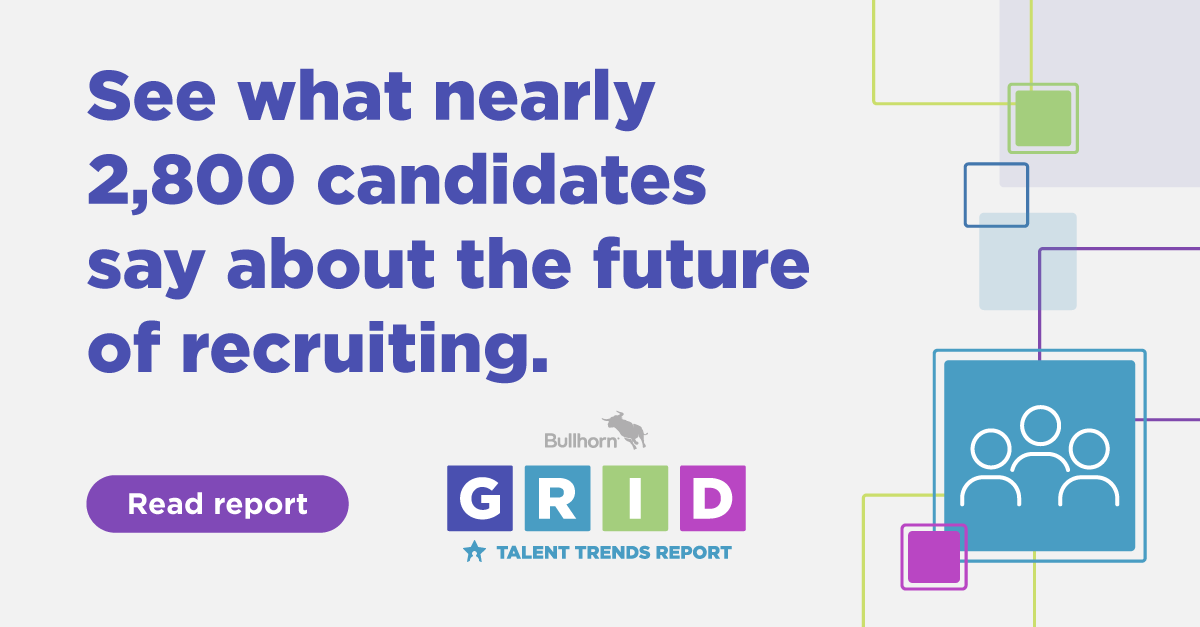So, how can you measure success? Here are three ways to frame your ROI with a marketplace partner:
Time Saved
One of the most quantifiable and tangible ways to measure success with a marketplace partner is looking at the hours you’ll save. Traditionally, this means automating manual work so that your team can spend more time building relationships, prospecting clients, or making placements.
Before you demo with such a solution, perform some timed tests to determine how long it takes to perform functions that you could automate with a partner. This will allow you to come into a demo with an exact understanding of how much their solution will impact the specific workflow of your agency.
Of course, many other types of marketplace partners can help you save time, too. This might mean outsourcing a function like marketing or it could mean that you improve your ramp-up time during onboarding—the majority of recruitment professionals say it takes more than a month until a new hire is effective. Whatever your goal, take note of how much time you allocate currently, and how much time you can save.
Product Adoption
Stepping up your team’s product adoption is one of the quickest ways to drive results. Solutions that elevate your team’s onboarding, training, and support will allow you to do more with what you have. Product adoption solutions help you get the most out of your tools by keeping you fully trained on all their features and functionality.
How can you measure the effectiveness of product adoption? Consider combining employee surveys and core performance metrics. Employee surveys help you ensure that the onboarding experience is useful and intuitive and performance metrics help you determine the impact on your bottom line. Some possible performance metrics to track:
- Job Coverage
- Pipeline Velocity
- Redeployment Rate
- Fill Rate
Visibility into Business Performance
Do you have insight into the metrics mentioned in the last section? Data is one of the most important assets you have as a recruitment agency. Many partners allow you to capture, analyse, and visualise that data to help you better understand your business and how your teams are performing. We surveyed recruitment professionals to find out their most valuable performance metrics. Here are two of the top picks:
Fill Rate
57 percent of recruitment pros rank fill rate as a top metric. It’s hard to argue with the pros on this one—fill rate is essential for understanding your agency’s efficiency. A low fill rate (job orders filled/job orders received) is a warning sign and an invitation to dig deeper into your metrics. Is there one weak link in your pipeline?
Is there one weak link in your pipeline? Are your submittals not resulting in hires? Do you have trouble finding candidates for a position? Is your team shorthanded? Answering these questions could help you discover a solution to your fill rate woes.
Submittal-to-Hire
The submittal-to-hire ratio combines elements of both quantity and quality, so it’s particularly useful as a tool to explore your productivity. If your agency has a high ratio, more qualification may be needed prior to client submittal. A low ratio? That’s not necessarily a bad thing, but it may point to a weak pipeline.
Among North American recruitment agencies, the sweet spot appears to be submitting three to four candidates for every hire made. Forty percent fall into that bucket, compared to 24 percent who submit four to five candidates and the highly-effective firms (14 percent) who only submit one to two candidates per hire.
Do you have insight into these metrics?
Visibility into these metrics—and many more—allow you to make smart decisions about your business. Visibility is also about more than analytics. Having proper integration with your solutions and your ATS is crucial to understanding the performance of your business.
Ultimately, the value that a marketplace partner provides you will depend heavily on the unique circumstances of your business. If you have a strong understanding of your business now, you’ll be well-positioned to make the right decision for your agency.
Want to learn more about the Bullhorn Marketplace? Explore more resources in the Bullhorn Marketplace Toolkit:


 Bullhorn’s marketplace of 100+ pre-integrated technology partners gives recruitment agencies the tools they need to build a unique, future-proof solution.
Bullhorn’s marketplace of 100+ pre-integrated technology partners gives recruitment agencies the tools they need to build a unique, future-proof solution.
